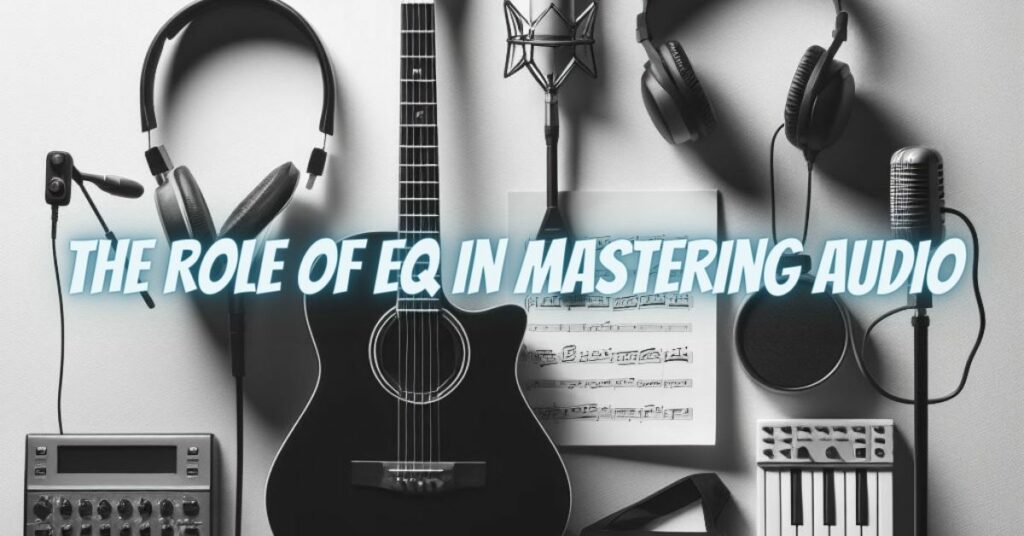Audio mastering is the final step in the music production process, where a skilled engineer optimizes the sound of a recording for its final release. One of the most crucial tools at the mastering engineer’s disposal is the equalizer, or EQ. In this article, we will explore the significant role of EQ in mastering and why it is an essential tool for achieving a polished and professional sound.
What is Equalization (EQ)?
Equalization, often referred to as EQ, is the process of adjusting the balance of frequencies within an audio signal. EQ allows you to enhance or reduce specific frequency ranges, such as bass, midrange, and treble, to shape the tonal characteristics of a sound. Mastering engineers use EQ to fine-tune the audio material and address various issues that can affect the final product.
The Role of EQ in Mastering
- Frequency Balance: One of the primary purposes of EQ in mastering is to achieve an optimal frequency balance. This involves ensuring that the lows, mids, and highs are appropriately balanced so that no particular frequency range overpowers the others. A well-balanced mix is essential for a clean and pleasing listening experience.
- Correction of Mix Issues: Even in the best mixes, there can be minor imbalances or resonances that need correction. Mastering engineers use EQ to address these issues, such as taming harsh high frequencies, boosting a weak bass line, or reducing muddiness in the midrange.
- Enhancing Clarity and Definition: EQ can enhance the clarity and definition of individual instruments and elements within a mix. It can bring out subtle details and make vocals, instruments, and effects stand out in the mix, resulting in a more vibrant and engaging sound.
- Tonal Shaping: Mastering engineers use EQ to shape the overall tonal character of the music. This is where creative decisions come into play. For example, you might use EQ to give a track a vintage, warm sound or a modern, crisp edge.
- Problem Solving: EQ can also address specific issues, such as removing unwanted background noise, resonances, or rumble, which may be present in the original recording.
- Matching Tracks in an Album: When mastering an album, it’s crucial to ensure that all tracks have a consistent sonic character. EQ is employed to make subtle adjustments to maintain this consistency throughout the entire album.
- Loudness Optimization: Equalization plays a role in the loudness optimization process, which involves making the music as loud as possible without sacrificing audio quality. Careful EQ adjustments can help maintain the sonic integrity of the music even at high volume levels.
Balancing Transparency and Creativity
One of the challenges mastering engineers face is striking a balance between corrective, transparent EQ adjustments and creative tonal shaping. Transparency is essential for preserving the artist’s original intention, while creativity can add a unique sonic signature to the final product.
It’s important to note that overzealous or inappropriate EQ can lead to negative outcomes, such as phase issues, unnatural sound, or loss of dynamics. Mastering engineers must apply their expertise and experience to use EQ effectively and judiciously.
Equalization in mastering is a fundamental tool for achieving a professional and polished sound. It addresses issues, shapes tonal characteristics, enhances clarity, and ensures a balanced frequency response. When used skillfully, EQ can transform a good mix into a great one, making it suitable for various listening environments and formats. Mastering engineers, armed with their ears and a keen understanding of audio, harness the power of EQ to deliver the best possible listening experience to audiences worldwide.


